Hi all,
I’m sorry for the late notice but i had to go to the hospital this morning and won’t be able to make it to class. I’ll see you all next week!!
We will have a make up something to make up for this cancellation.
Thanks,
Gwen
Gwendolyn Shaw
Hi all,
I’m sorry for the late notice but i had to go to the hospital this morning and won’t be able to make it to class. I’ll see you all next week!!
We will have a make up something to make up for this cancellation.
Thanks,
Gwen
Gwendolyn Shaw
If Mesopotamian, Ancient Egyptian, Greek and Roman art were looked together you would be able to identify the change from each other. The form of art depicted ranges from the worshiping of Gods to showing the potential of human beings. Each of these civilizations influences each other which shows change and adaptation in both society and art. First of all, in Mesopotamia one art showing worshiping is the Statue of Gudea in 2150 BCE in Neo Sumeria. The small stone figure is made to be durable and last a while. It can also be seen as a someone with a high status worshiping their religion or praying to a God due to their composure being seated and his hands together with a humble look.

Moving on to Ancient Egypt is another example of worshiping. However, the pharaohs were looked upon as rulers are praised highly. Their social status was at the peak and were known to have a form of communication to the gods. They were the chain which connected the people to the many gods. The statue shown below is Menkaure and Queen 2491-2472 BCE which are the pharaoh and queen standing next to each other. It looks like it has been made through a similar material as the previous art, the Gudea. Their posture shows the superiority and power of the two. They are posed in an ideal posture. Their feet are close to each other while standing up vertically. Their are similarities to Mesopotamia and Egyptian art as seen between these two statues. The stiffness in their poses to the chunky like construction give it’s durability and strength. Also, they are posing as if they were prepared to be frozen in this moment.

One Greek statue that displays a young male is Kuros. The figure is nude, which represents its appreciation of the body in Greek art. The statue shows the physique of a young adult while displaying the softness of a human body at the same time. Kuros is standing straight, facing forward with two feet almost together, meaning the equal distribution of weight of the entire body. The curves in the facial features such as eyebrows and eyelid down to the knee caps resonate to a natural human body.

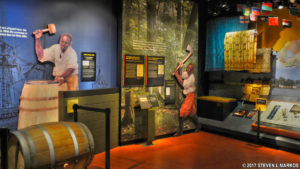
Upon visiting the African Burial Museum and reading about how many people are buried there and their traumatic pasts, I was saddened. There are 15,000 enslaved African Americans buried at the African Burial Ground. Considering their work ethic and how they are essentially the backbone of the “colony building” of America, they should be respected and honored. However, during those times African slaves were seen as property, a commodity to be bought and sold, to be used and abused. They were seen as animals, where if they were sick and couldn’t perform or be sold for anything they were just thrown off the ship that was on the voyage to America.
I enjoyed learning about how the enslaved African Americans viewed death through their artwork. Their burial was a mix of celebration, mourning, and connecting with their ancestors. They also buried their loved ones with certain possessions. It seemed almost peaceful to watch how they honored the dead as well as their ancestors and formed a community regardless of the numerous rules/ codes that were imposed on them.
Enslaved Africans had to sneak out in order to have social gatherings. This also meant that they were breaking the law, which seems outrageous to think about relative to today’s society. This really made me think about where this ideology came from that blacks are inferior to whites and what justification slave-owners had for owning and possibly raping slaves, besides it being the “norm” at the time. While slavery is abolished in the current times, it doesn’t seem that we have evolved too far from those ideologies; rather, they are resurfacing in the form of police brutality, mass incarceration, and environmental racism.
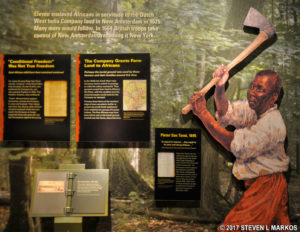
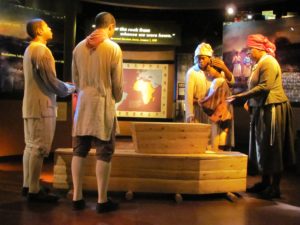
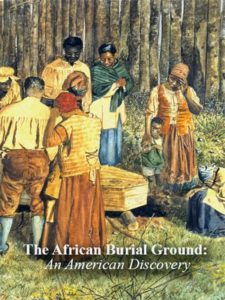

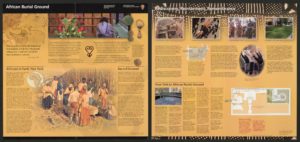
 Loading...
Loading...
To make a blog post is fairly easy to do, especially with the help of previous classmates posts. First, you go to the class website using the appropriate URL. Then, you sign up for the correct class time and add yourself to the website. The next step to make a post is click on the box that says “+New”, located at the top of the screen and that will bring you to a new page that says “Add Post”. From there, you create a title for your post, write something for the body, and choose the appropriate categories and tags, and finally hit post. So simple!
Unit one was about Formal Analysis and Paolo Friere, Born in Recife, Brazil and was a person in poverty. Paolo studied about law but never practiced it and worked as a professor in many universities. He was also imprisoned and exile during the military coup in Brazil. Paolo published Pedagogy of the Oppressed by 1968 and explains about the banking model, students are depositories and the teacher being the depositor. The banking model explains the communication and knowledge being given by inventions of re-invention through education. It was a concept to send out education to the students being taught by the teacher who teaches it. John Dewey, who believed the opposite way of how education is being taught. He believed education is not the correct way to prepare yourself in life. I understand it from that point of view because you can also understand something if you physically do it and education doesn’t teach everything you need to know in life. The schools don’t teaches you how to file taxes and fill out application, which is essential in life because as a grown up you need to know how to do these things by yourself. John Dewey also believe there should be a meaningful experience in learning through education to not fail from his or her mistakes on success.
Topic: Humanism throughout history. Thesis Statement: Although the humanism movement started during the time of ancient Greece and Rome it is still seen portrayed in artwork today. Introduction: Humanism is the a movement in art history that shifted the focus of art works from deities and worshiping the deities to a focus on humans, more specifically the ideal human. Instead of valuing a God or religion during the movement people began to focus more on valuing humanity therefore making themselves gods. equal to gods by putting themselves at the center of all social and moral concerns. Prior to the humanism movement art was typically made to worship the deities. An example of this can be seen in the photograph of the Standing Male Worshiper. Prior to the humanism movement art was typically made to worship the deities. The Standing Male Worshiper is an example of a piece of artwork that was created before the humanism movement. As it can be seen in the photograph the creator of this sculpture did not put much effort into adding detail to the human represented in the sculpture. The artist of the sculpture created it to serve one purpose which was to be a praying stand in for the person it represented.Artist: N/A Title: Standing Male Worshiper Date: 2900–2600 B.C. Museum: The Metropolitan Museum of Art As time began to progress so the idea of humanism began to form and the shift from making art that focused on deities and worshiping them to making art that worshiped humanity and focused on the ideal human body. An example of an artwork that showed the start of the transition from focus on deities to a focus on humans is the Statue of Kouros. Unlike the Standing Male Worshiper which had almost no detail on the human body, the Statue of Kouros focuses soley on the human body. It is a representation of a young nude male. The artist of this sculpture adds small but noticeable details such as the outlining of the mans abs and chest. Another faint but drastic difference between the two sculptures is the sense of movement that can be seen in the legs of the Statue of Kouros. As seen in the photograph below, the left leg of the statue strides forward giving the sculpture a feeling of movement.
. Artist: N/A Title: Statue of Kouros Date: 600 BCE Museum: The Metropolitan Museum of Art As more time passed the humanism movement became larger and lead to much more drastic changes in the art world. An example of a artwork that shows drastic a drastic change due to the humanism movement is the statue of Polykleitos. Similar to the statue of Kouros, the Doryphoros has a sense of movement but different to the Kouros, the Doryphoros has no symmetry. Instead the statue of Polykleitos has contrapposto. Contrapposto is the use of counter balancing to form "an asymmetrical arrangement of the human figure in which the line of the arms and shoulders contrasts with while balancing those of the hips and leg."(Google definition).By giving the statue contrapposto it the artist was able to show that the statue is suppose to represent a person walking.
Artist: Polykleitos Title: Doryphoros (Roman copy) Date: 450-440 BCE Museum: Museo Archaeologico Nazionale (Naples) Proposal/Task: The student is to select five modern pieces of artworks and explain how they represent/show that the humanism movement is still a part of art to this day. Requirements: Assemble a minimum of five works of art that relate to the thesis statement. Images should have the following information: artist, title, date. Conclusion: After gathering and explaining the 5 artworks you have chosen the reader/ grader of this assignment should be able to easily tell how each individual piece of art relates to the humanism movement and how it is similar or different to the 3 artworks that I have listed above. Work Cited:Dr. Steven Zucker and Dr. Beth Harris, "Standing Male Worshipper (Tell Asmar)," in Smarthistory, December 16, 2015, accessed December 17, 2018, https://smarthistory.org/standing-male-worshipper-from-the-square-temple-at-eshnunna-tell-asmar/. “Standing Male Worshiper.” The Met's Heilbrunn Timeline of Art History, www.metmuseum.org/toah/works-of-art/40.156/. Dr. Beth Harris and Dr. Steven Zucker, "Marble statue of a kouros (New York Kouros)," in Smarthistory, December 20, 2015, accessed December 17, 2018, https://smarthistory.org/marble-statue-of-a-kouros-new-york-kouros/. “Marble Statue of a Kouros (Youth).” The Met's Heilbrunn Timeline of Art History, www.metmuseum.org/toah/works-of-art/32.11.1/. Dr. Beth Harris and Dr. Steven Zucker, "Polykleitos, Doryphoros (Spear-Bearer)," in Smarthistory, August 8, 2015, accessed December 17, 2018, https://smarthistory.org/polykleitos-doryphoros-spear-bearer/. “Marble Statue of a Kouros (Youth).” The Met's Heilbrunn Timeline of Art History, www.metmuseum.org/toah/works-of-art/32.11.1/.
 Loading...
Loading...

First, search up: “https://commons.gc.cuny.edu/ log in with your email and password
Then you locate “Fall 2018 Art 1010” under your sites.The top left, click on new post and add a title and submit your blog.Find the appropriate categories and class catergories.
Finally, click publish on top right once everything is complete.
This is my take on the creative segment of the final project. Here’s the Link of it on google drive(attached is my drawing): https://drive.google.com/open?id=1eT-6Rc_6BfFeFD3Bnu2obyU4HDykjcg_nfqtaof7bEo